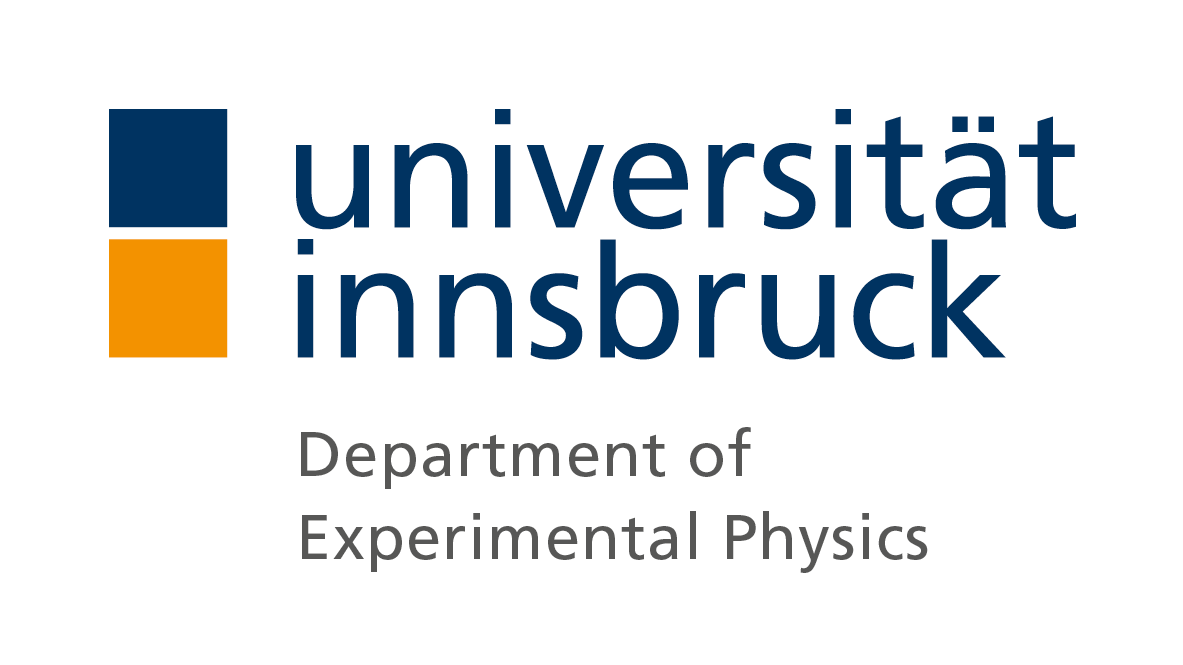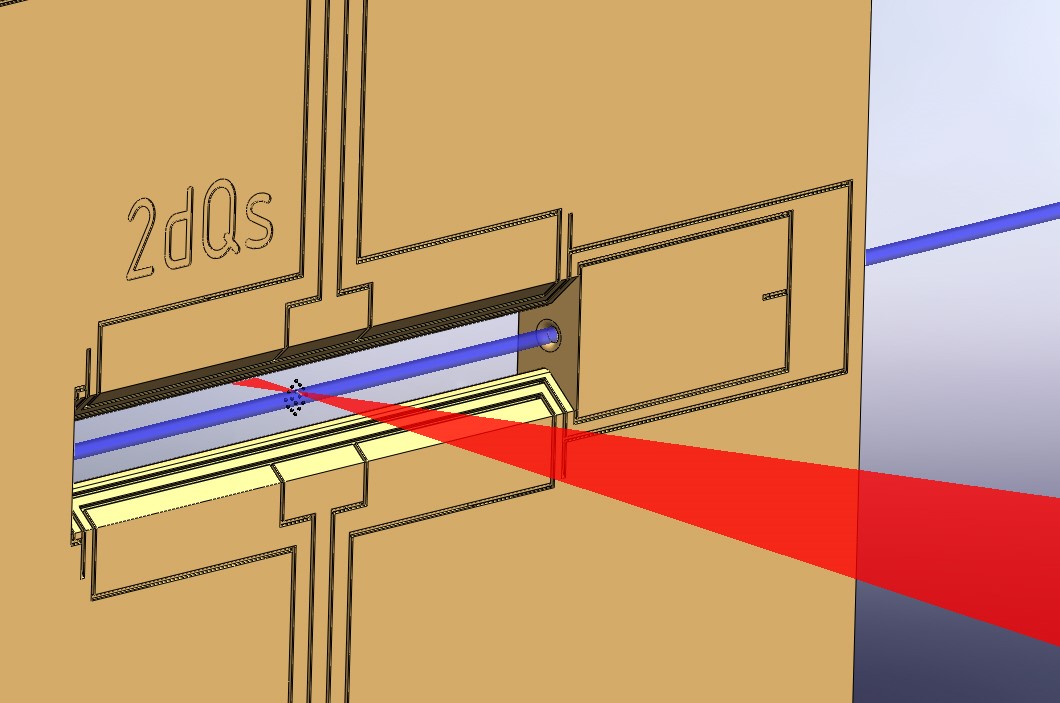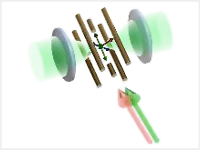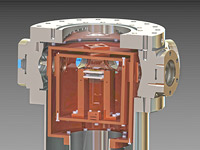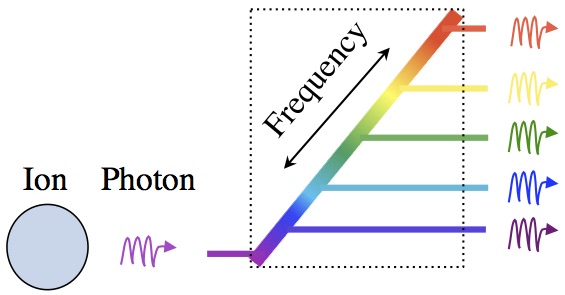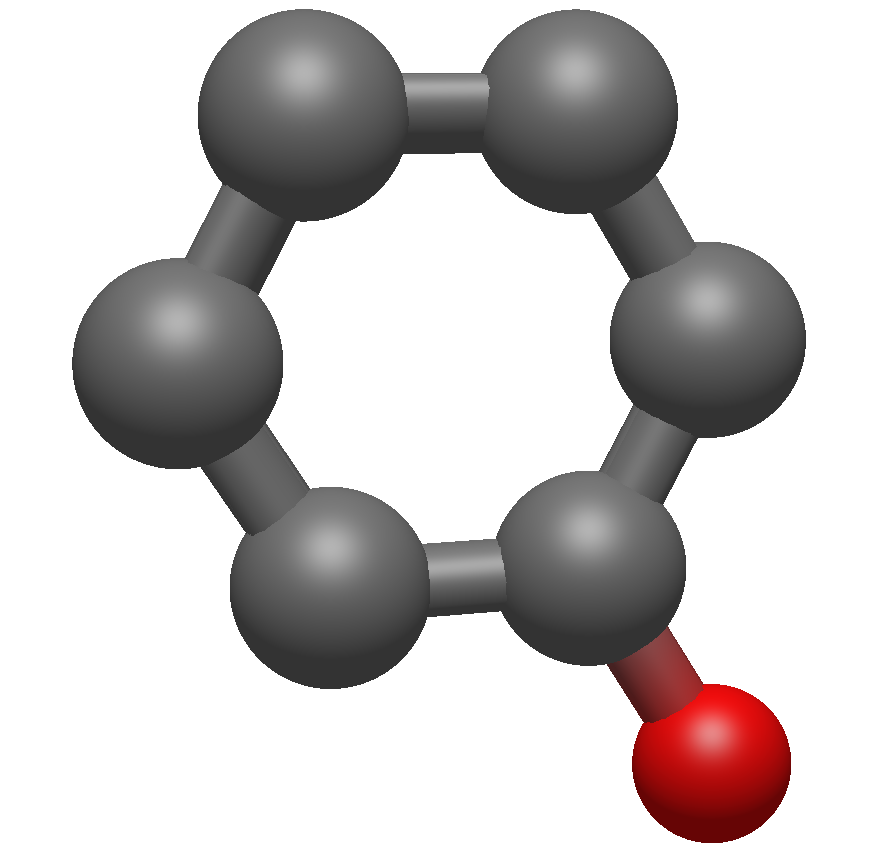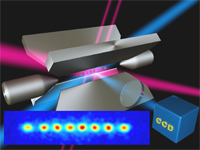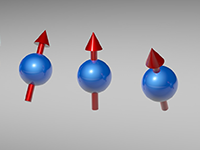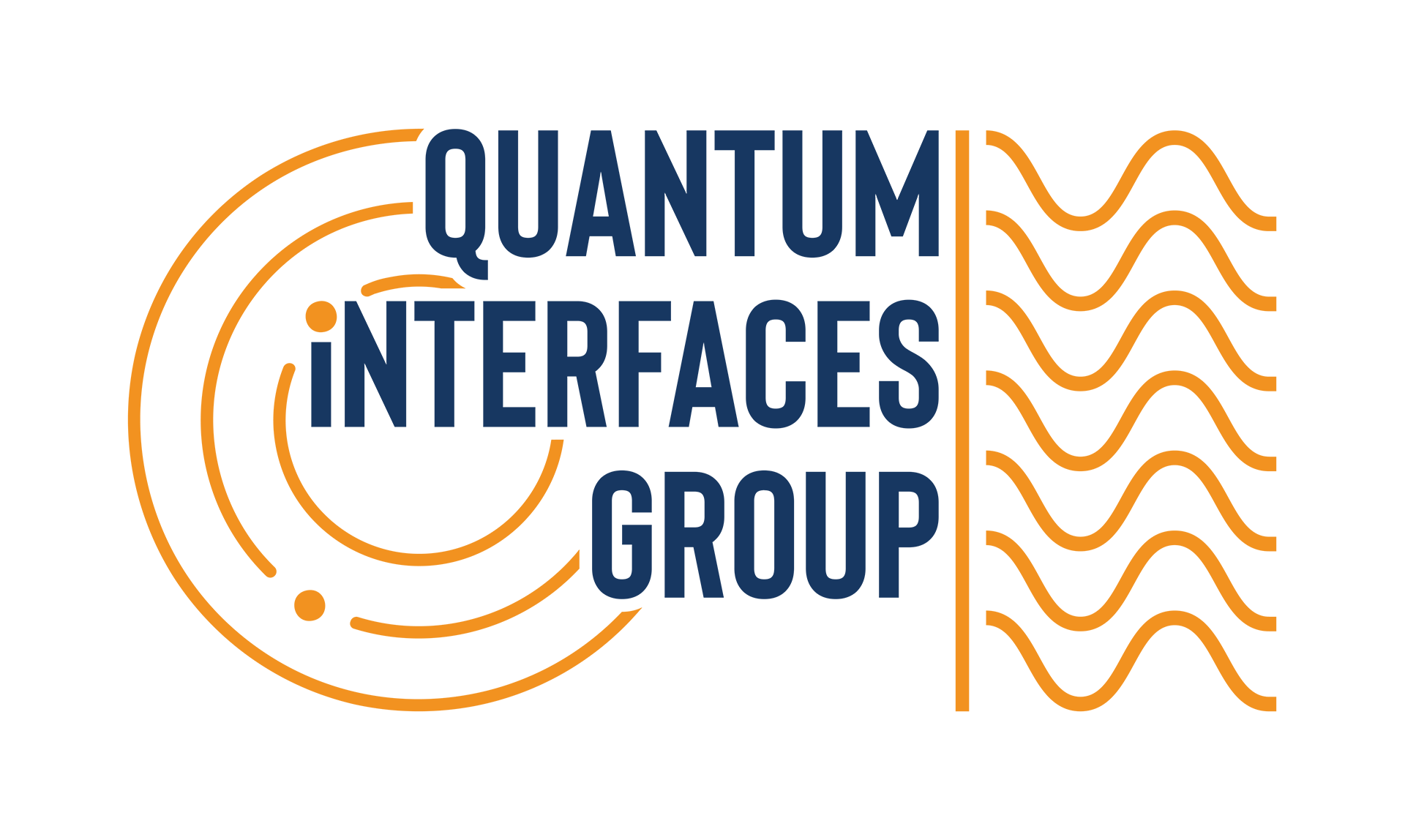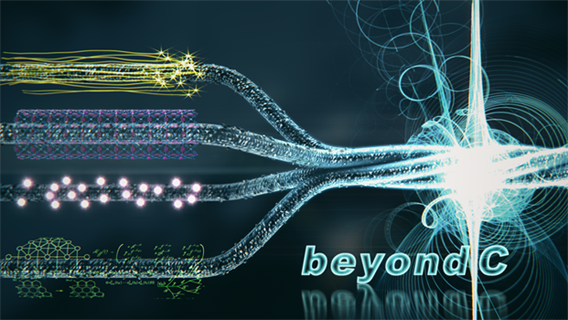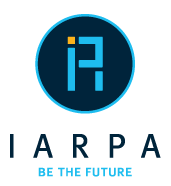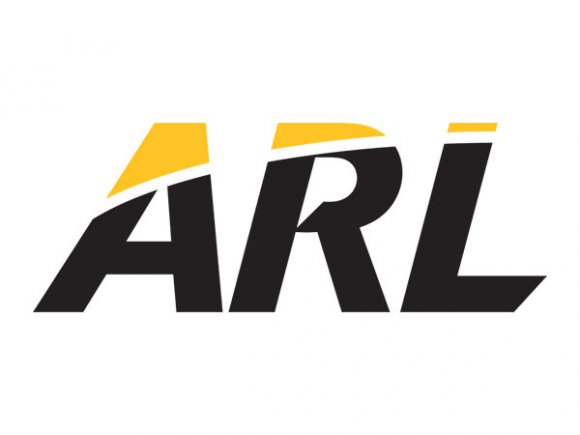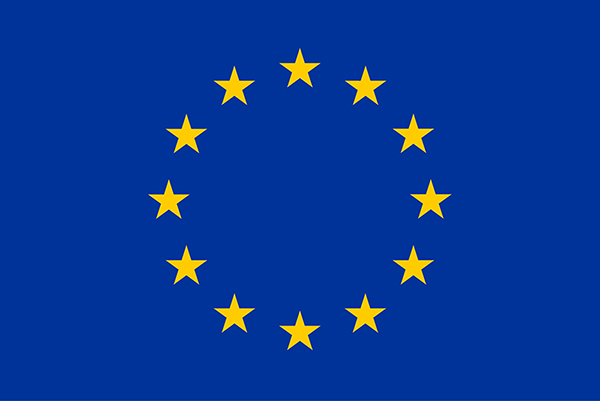Scalable Quantum Information Processing
Scalable Quantum Information Processing
In this project, we are implementing a scalable approach in trapped ion quantum computing. This IARPA sponsored project is a collaboration between four universities, UC Berkeley, MIT, University of Mainz, and University of Innsbruck, where the main setup is built in Innsbruck with the other universities contributing to the setup in their specialties. We are using a cryostat to reduce the heating rate of our 2D planar trap and two ion species (40Ca+ and 88Sr+) to sympathetically cool our qubits with another ion species. With this approach, we try to push trapped ion quantum computing to the borders of what is feasible at the current state of technology.
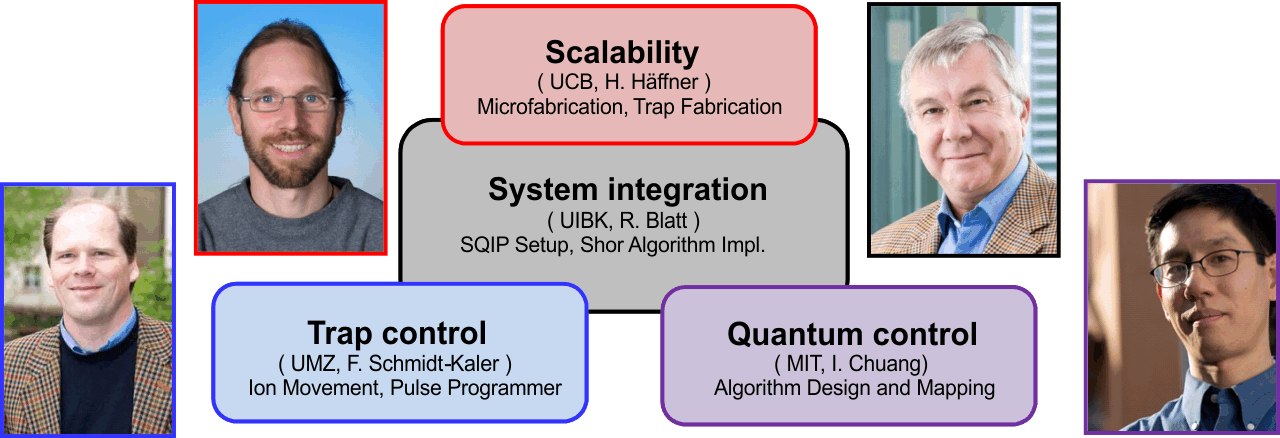
The GOAL: we seek to demonstrate Shor’s algorithm with trapped ions, factoring N=15, as a strategic test of scalability, integration, classical control, and quantum control.
Within the group of Rainer Blatt, several teams are working in the field of applied quantum information processing: The Cavity QED team with their two experiments are looking into the ion-photon interface as well as interconnectivity of distant traps, the QuIQS team is working on quantum simulations, the LinTrap team is focusing on the realization of quantum computations, while the CryoTrap team is developing new, high-quality traps for both 1D and 2D Arrays of ion-traps. The SQIP team complements these efforts by specifically looking into the physical realization and implementation of scalable quantum information processing. Here, the efforts of the SQIP team bases its goals on the achievements of the other teams, learns about their limitations, and tries to overcome these in a scalable way. These solutions will, subsequently, be combined into the SQIP setup that should overcome limitations of currently existing setups.
Assuming one has a quantum computer, one may ask three questions:
- How large is my quantum register?
- How good can I control it?
- How fast can I extract information from my quantum computer?
Currently, best control of ions is achieved in macroscopic, bulky 3D Paul traps. Here, between 10 and 30 ions can be controlled. However, in the long run, the simple, harmonic potentials provided by these traps will not allow us to go for large-scale quantum computation. If we want to resolve each individual ion in longer and longer ion-chains, we would need to lower the stiffness of the trap to prevent the ions from bunching up in the center. But if we do that, we end up with more and more heating and less control over the ions. Dave Kielpinski suggested to go for segmented traps (please also see the respective efforts by the CryoTrap team). Here, one can operate and control individual potential wells, thus split up large strings into manageable smaller strings, and control each of these smaller units with higher fidelity. For this reason, the SQIP team is using a segmented trap that has been provided by the group of Hartmut Haeffner in Berkeley.
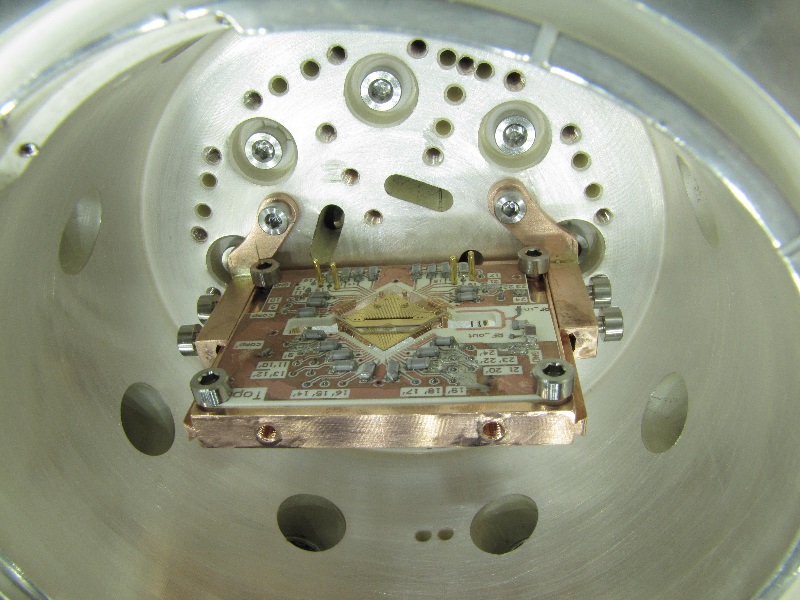
The previous multilayer - planar trap, as provided by the group of Ferdinand Schmidt-Kaler in Mainz.
Whenever one tries to trap single particles, especially in the context of precision control, one would like to make sure that such a particle remains undisturbed. Generally, ion trap experiments try to operate their vacuum chambers below 10-10 mbar, but on the long run such pressures are not sufficiently low. Collisions with the background-gas force one to recool or even recrystalize the ion-string - in rare cases even reload a few ions which are lost cause of collisions. One way around this problem is to work with a cryostat. Here, temperatures of around 4K effectively freeze out any remaining background gas (together with getter material and ion-pumps), to achieve a vacuum that should allow one to work with strings of 50 and more ions - and negligible interaction with the background. Another big advantage of the cryostat is that it helps to reduce noise in segmented traps - an effect that is still not well understood. And finally, the cryostat allows us to quickly fix any error on the ion-trap chip. Usually, these low pressures of 10-10 mbar are reached by backing out the vacuum chamber for more than 2 weeks. If one wire gets loose, you will easily loose half a month of experimental time. With a cryostat, one can go from cryo-temperatures to room temperature within a day, repair or upgrade any component you desire, and cool it down right away. Everything within 2-3 days. The employed Janis-flow cryostat allows us to work with both LHe and LN - depending on the required temperature range.
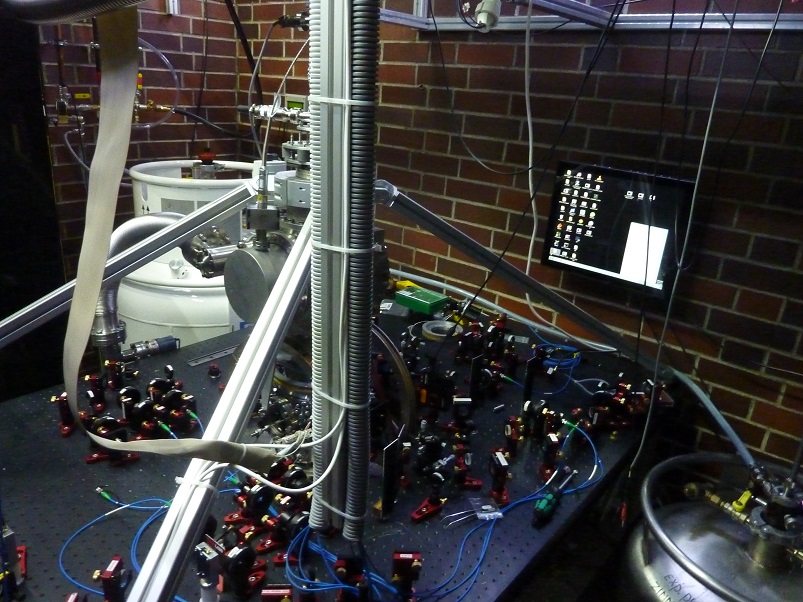
The experiment table with the cryostat and a liquid Helium and a liquid nitrogen dewar.
Using a segmented trap, we can go for long ion-strings, with the additional benefit of being able to work on smaller units within the large string (which will likely benefit the performance of subsequent gate operations). The cryostat will help us to upgrade the system and repair any errors almost a factor of 10 faster than in conventional, room-temperature setups. In addition, the cryostat should notably help with heating-rates of the respective ion-trap. Finally, the cryostat should also also reduce the magnetic field fluctuations within the trap, and thus further improve the performance of the setup. These points raise the question: How fast can you then extract information from any computation? When you look at typical numbers from the LinTrap team or the QuIQS team, you will notice that one can repeat any experiment about 100 times in about 2 seconds. So, what is taking so long? One can look at a single cycle, meaning a single run of an experiment and investigate how long each logical unit takes. Any quantum experiment consists of initialization, the actual experiment, followed by the readout. Usually, the ion strings are sideband-cooled for initializing the string, which requires about 5-10ms. After that, gates are applied to do the actual simulation or computation, but these usually only require 2-5ms. Finally, state detection is done via fluorescence detection, mainly using a CCD camera, which requires about 10ms. This means, out of about 25ms, only 5ms - or 20% - are actually the experiment. Thus, the SQIP team is looking into means of implementing initialization and detection both faster, and at higher fidelities.
In the beginning of ion-trap based quantum computation, entangling operations have been mainly based upon the ideas of Cirac and Zoller. Here, it was crucial to perfectly initalize the ion string in its motional ground state. Nowadays, we base almost all entangling operations on the Moelmer-Soerensen interaction. This interaction does not require an initialization in the absolute ground state - one of several reasons why it outperforms our Cirac&Zoller gate implementations. But this also means that we wouldn't have to do sideband-cooling. We could employ methods that might not cool as far down, but are notably faster. Here, the SQIP team - together with the LinTrap team - successfully implemented Raman cooling of ion-strings. This method requires only a few hundred microseconds, compared to several milliseconds. Actually, this method is fast enough to be employed within long sequences to recool the ion-string along an extensive quantum computation - as we have recently demonstrated in our experiments. Thus, the initialization time can be reduced by a factor of 20, without a loss of performance.
One problem, however, is that cooling usually means that any information encoded in an ion is usually lost. Thus, one has to employ elaborate sequences to make sure that an ion-string is cooled, yet the information in the string is not lost. One solution for this problem is to add a second species into the trap. Thus, one can use one species for the computation, while the second species can be used to cool the ion string. However, the applications of a two-ion quantum computer are notably broader than that. There are proposal for quantum simulations where one would like to couple a fermionic system to a bosonic system. One possible approach could be to use the quantized motion of the ions as a bosonic bath, while the electronic excitation of the ions serves as fermionic system. Here, readout of the bosonic bath could be performed via readout of the motion on the second ion-species - without altering or disturbing the information encoded in the electronic state of the 'boson species'. For our particular experiment, we have chosen Ca and Sr, as the structure of the level scheme is (basically) identical (see below), and all necessary lasers are commercially available.
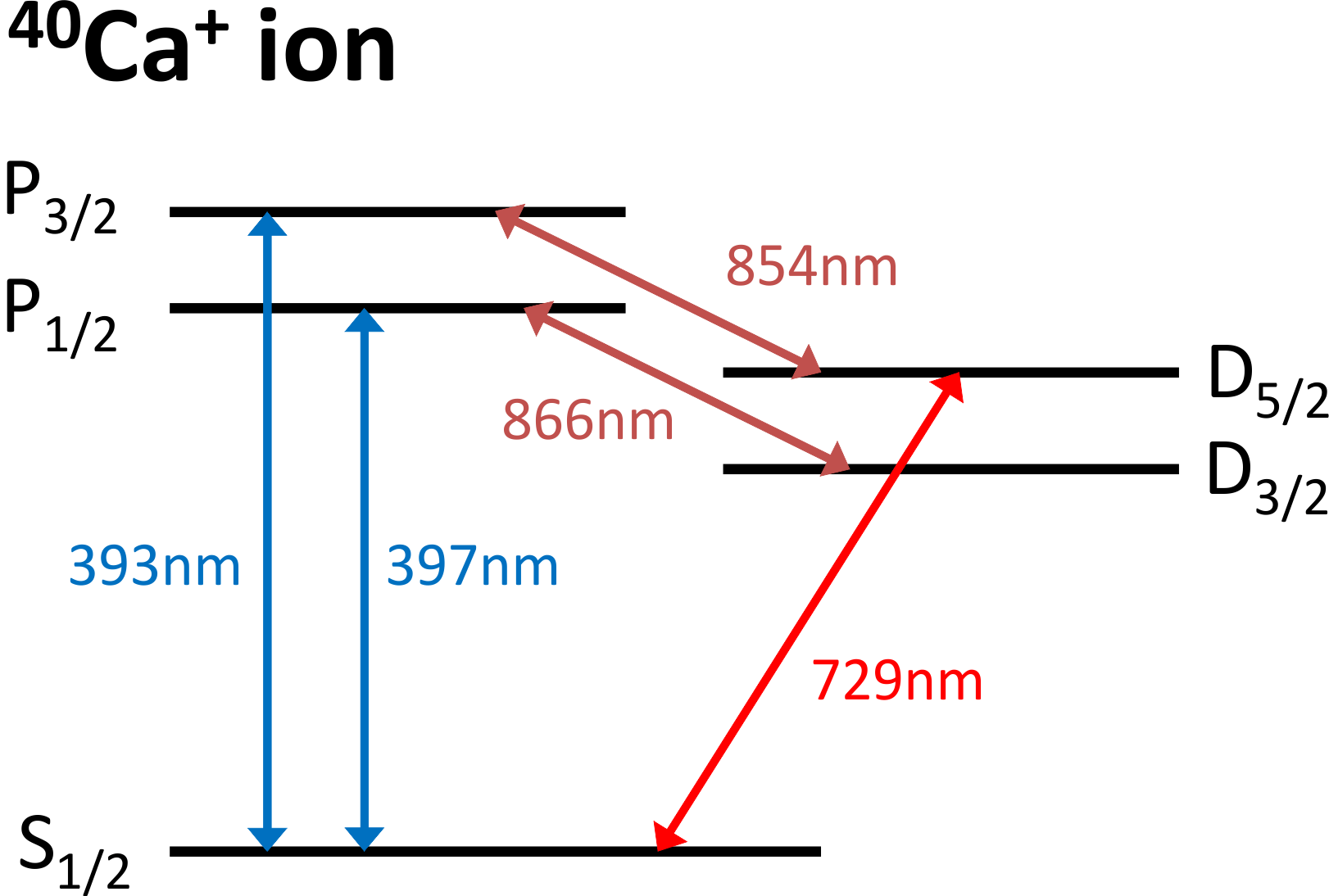 | 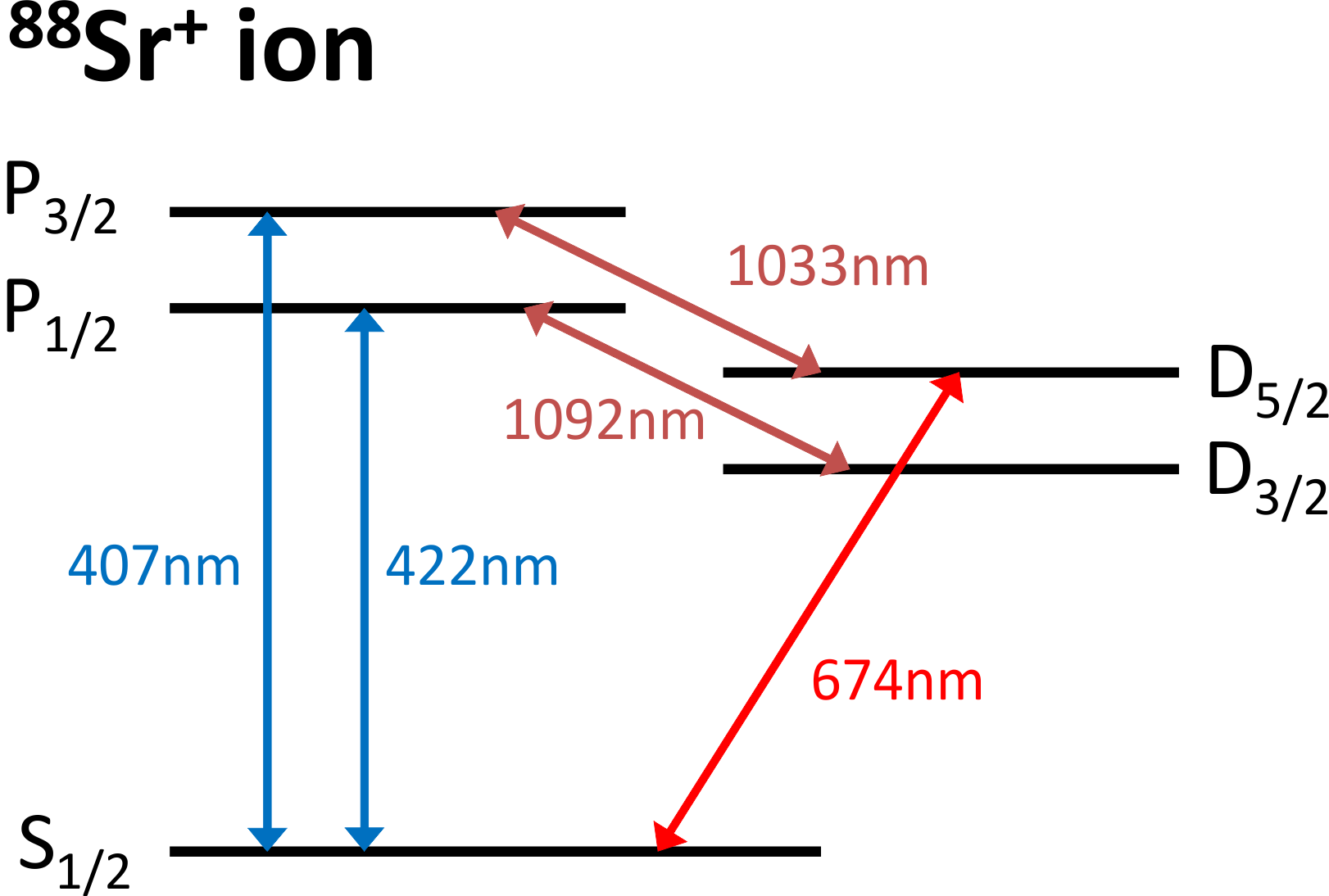 |
With respect to the detection, CCD cameras have the advantage over photomultiplier tubes (PMT) by providing spacial resolution - we can thus distinguish one ion from the other. On the other hand, the efficiency of CCD cameras is lower than those from PMTs. In addition CCD cameras (usually) do not provide a time-resolved signal, but rather the total number of counts within a certain detection window. The final information that one ought to provide now is the detection fidelity - a measure for how well one can distinguish the two states we are working with. Given a detection time of about 10ms, and a lifetime of the excited state of about 1s (for both Sr and Ca), one can already deduce that there is a 1% chance that a decay takes place during the detection - and thus one might wrongly assign the state. One way around that would be to a use time-resolved detection and evaluation. A PMT could do that, yet at the cost of the spatial resolution ... However, we are currently looking into the possibility of using PMT arrays, where each ion gets mapped (or focused) onto its own PMT. Thus, one would have spatial resolution and time-resolved, high-fidelity readout - at costs notably lower than those compared to a decent CCD camera. The expected detection times should be reduced to about 1ms - about a factor of 10 faster than with currently used CCD cameras.
Combining the benefits of fast cooling and fast readout, the cycle time should change from about 20ms to about 5ms. This factor of four can be used either to collect notably more data, in the sense of different settings, in the same time - a huge benefit in the field of tomographic measurements. Alternatively, one can obtain the same data as previously, with notably reduced statistical uncertainty. Finally, the increased speed in data taking also makes the entire experiment less susceptible to any remaining, uncompensated drifts in the experiment. Overall, the amount of data we should be able to take, its statistical significance, and its fidelity should, again, succeed previous realizations.
While we will strongly focus on quantum information processing, the fields that the SQIP experiment can address is notably broaded. The two-species not only allow us to work on quantum simulations with respect to bosonic and fermionic baths, we can also work on quantum metrology to better characterize Sr, develop and improve novel methods in the field of ancilla-assisted quantum logic, and consider recipes to entangle two species to investigate the fundamentals of physics.
Several of the considered components to exceed the capabilities of state-of-the-art experiments have already been implemented in the setup. We successfully trapped ions, have the lasers for both species set up, and are currently working on an improved trap and cryostat system. With the next months we are looking forward to a calibration of the setup - ideally showing a performance that succeeds previous realizations.
Project Members
| 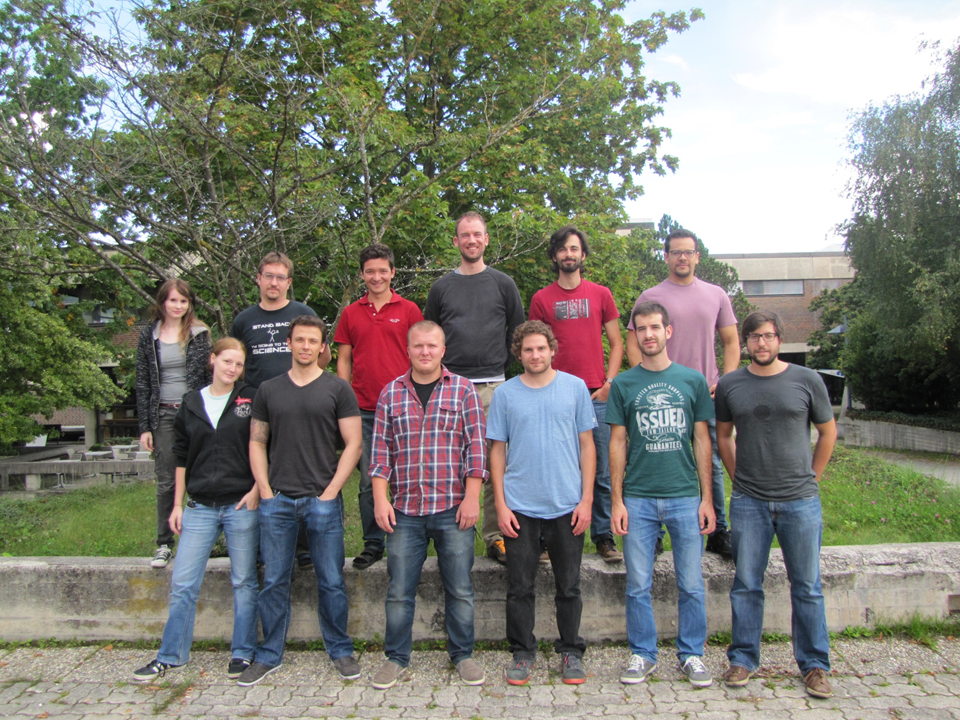
Front row left to right: HH, MM, KL, LP, EM, DN |
Former group members: Rafael Rothganger de Paiva, Virgile Andreani
